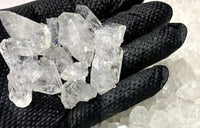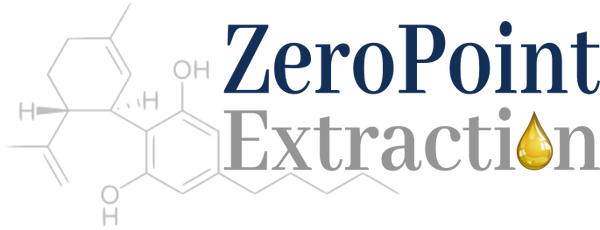Recent posts
-

-
 What Are THCa Diamonds?October 14, 2025
What Are THCa Diamonds?October 14, 2025 -
 Delta 9 Gummies GuideOctober 8, 2025
Delta 9 Gummies GuideOctober 8, 2025 -
 Head High vs Body High: A Guide to Cannabis EffectsOctober 1, 2025
Head High vs Body High: A Guide to Cannabis EffectsOctober 1, 2025 -
 What is THCA Crumble?September 22, 2025
What is THCA Crumble?September 22, 2025 -
 10 Ways to Elevate Self-Care Awareness MonthSeptember 14, 2025
10 Ways to Elevate Self-Care Awareness MonthSeptember 14, 2025

What are Functional Mushrooms?
By Zero Point
Table of Contents
Introduction
Functional mushrooms, also known as medicinal mushrooms, have gained significant attention in recent years for their potential health benefits. These unique fungi have been used for centuries in traditional medicine practices across different cultures. In this article, we will explore what functional mushrooms are, popular types, their health benefits, how to incorporate them into your diet, some considerations to keep in mind, and ongoing research in the field.
What are Functional Mushrooms?
Functional mushrooms are a diverse group of mushrooms that possess various bioactive compounds, such as polysaccharides, terpenoids, and phenolic compounds. These compounds are responsible for the medicinal properties of functional mushrooms. Each type of functional mushroom offers different health benefits and is used to address specific health concerns.
Popular Types of Functional Mushrooms
There are numerous types of functional mushrooms, but let's take a closer look at some of the most popular ones:
Reishi Mushroom

Reishi mushrooms, also known as Ganoderma lucidum, have been a staple in Eastern medicine for thousands of years. Known as the 'Mushroom of Immortality,' reishi is believed to boost the immune system, improve sleep quality, reduce stress, and promote overall well-being.
Reishi mushrooms have a distinctive, shiny, and varnished appearance. The cap is typically kidney-shaped and comes in a range of colors, usually reddish-brown to black. Young Reishi may have a bright orange or red hue, which darkens with age. The texture of a mature Reishi is woody and hard, quite different from the soft, fleshy texture of culinary mushrooms.
Reishi mushrooms typically grow on dead or dying hardwood trees. They can be found as single mushrooms or in groups, often in the shape of shelves. They thrive in warm and humid conditions, often found in regions with a significant rainy season followed by a warm period.
Lion's Mane Mushroom

Hericium erinaceus, or Lion's Mane, is a mushroom with a long history of use in traditional Chinese medicine. It is renowned for its distinctive shape resembling a lion's mane as it grows. Lion's Mane Mushroom is recognized for its potential cognitive benefits, including enhancing memory, focus, and mental clarity. It is often used to support brain health and may have neuroprotective properties.
Lion's Mane mushrooms are distinctive with their long, white, shaggy spines that resemble a lion's mane as they mature. Younger specimens might appear more globular or as tight clumps of spines. They are typically white or cream-colored, though they may yellow with age. They can range from a few inches to over a foot across when fully mature. These mushrooms grow as a single clump of dangling spines, usually from dead or dying trees. Unlike other mushrooms, they lack a traditional cap and stem structure.
Lion's Mane mushrooms are found in North America, Europe, and Asia. They primarily grow on hardwood trees, especially oaks and beeches, in the forests of these regions. They typically grow in late summer and fall, but in some climates, they may also be found during other seasons.
Chaga Mushroom

Chaga mushrooms, often hailed as the "King of Medicinal Mushrooms," is rich in antioxidants and has been traditionally used to support immune health, reduce inflammation, as well as other health concerns. Chaga has been used for centuries, particularly in Siberia and other parts of Asia, as a natural remedy for various ailments. Chaga is rich in a complex array of nutrients, including antioxidants, polysaccharides, beta-glucans, and melanin.
Chaga mushrooms are not typical cap-and-stem mushrooms. They appear as irregularly formed black masses that resemble a clump of burnt charcoal. The black, crusty exterior is due to the presence of melanin. When broken open, the inside of Chaga is a rusty yellow to orange color, with a cork-like texture. Chaga can vary in size from small nodules to large growths the size of a basketball. They are typically found protruding from the trunk of trees, often at wound sites.
Chaga is primarily found in the Northern Hemisphere. It thrives in cold climates, especially within the circumpolar boreal forests of the northern latitudes. In North America they can be found in the Northeastern United States, Alaska, Canada, especially in the boreal forests. They are also common in Northern and Eastern Europe, Siberia, and the Russian Far East, where it has been traditionally used for centuries.
Cordyceps Mushroom

Cordyceps mushrooms, also known as "Himalayan gold," have long been revered in traditional Chinese medicine for their natural healing abilities. Cordyceps is known for its potential to increase energy levels, improve athletic performance, support respiratory health, and enhance libido.
One of the most striking features of Cordyceps is that many species grow out of the body of insects or arthropods. The most well-known species, Cordyceps sinensis (now Ophiocordyceps sinensis), typically grows out of caterpillars. Cordyceps generally have an orange or brown color, with a cylindrical, finger-like shape. The fruiting body, which is what is commonly referred to as the mushroom, extends from the host and stands upright, with a smooth or wrinkled texture.
The most famous Cordyceps, Ophiocordyceps sinensis, is found primarily in the Himalayan region, thriving in high-altitude, cold, grassy alpine meadows of Tibet, Nepal, Bhutan, and parts of China and India. It prefers altitudes of 3,000 to 5,000 meters. Various types of Cordyceps are also found in other parts of Asia, including Japan, Thailand, Vietnam, and Korea, in moist forest soils and in the subtropical forests. Certain Cordyceps species are native to North America and can be found in more humid regions, including the Pacific Northwest, growing on various insects and arthropods.
Maitake Mushroom

Maitake mushrooms, also known as "Hen of the Woods," are a large, frilly fungus known for their rich flavor and health benefits. Maitake mushrooms are often used to support immune health, regulate blood sugar levels, and potentially aid in weight management. They are also known for their antioxidant properties.
Maitake mushrooms have a distinctive frilly, leaf-like structure, often growing in a large mass or cluster. They typically have a grayish-brown color, with the edges of the frills lighter, often white or cream. They can grow quite large, sometimes weighing over several pounds. The texture is firm and somewhat fibrous, becoming softer when cooked.
Maitake mushrooms grow at the base of trees, particularly oaks but also elms and maples. They are found on the ground, preferring the decaying roots or stumps of their host trees.
In North America they are widely distributed in the eastern parts of the United States and Canada, especially in hardwood forests. In Asia they are particularly prevalent in Japan and China, where they have been harvested for centuries both for culinary and medicinal purposes.
Shiitake Mushroom

Shiitake mushrooms have a storied history, deeply rooted in the mountainous regions of East Asia. Shiitake mushrooms are popular for their immune-boosting properties, potential anti-inflammatory effects, and their ability to support heart health. They are also a good source of essential nutrients.
Shiitake mushrooms are known for their distinctive appearance. They typically have a broad, umbrella-shaped, brown cap that ranges from 2 to 4 inches in diameter. The caps have a slightly curled edge and are spongier to touch when fresh. They can be darker or lighter brown, but generally have an earthy tone.
Shiitake mushrooms are native to East Asia and have been cultivated in China, Japan, and Korea for centuries. They are a staple in many Asian cuisines due to their rich flavor and health benefits. In the wild, shiitake mushrooms grow on fallen hardwood trees, especially those of the chestnut, oak, maple, and beech variety. They prefer a moist, temperate climate and are usually found in mountainous regions with these conditions.
Health Benefits of Functional Mushrooms
Functional mushrooms offer a wide range of health benefits due to their unique compounds. Some of the potential benefits include:
- Boosting immune function: Many functional mushrooms have immune-boosting properties, helping the body fight off infections, colds, and other diseases. They can enhance the activity of immune cells and promote overall immune system health.
- Reducing inflammation: Certain functional mushrooms possess anti-inflammatory properties, which may help alleviate symptoms of inflammatory conditions, such as arthritis and inflammatory bowel disease. They can modulate the body's inflammatory response and promote a healthy balance.
- Supporting brain health: Lion's Mane mushroom, in particular, has shown promising results in supporting cognitive function and nerve growth. It may help improve memory, focus, and overall brain health. Functional mushrooms may also have neuroprotective effects.
- Improving energy levels: Cordyceps mushroom is often used to enhance physical performance, increase stamina, and combat fatigue. It may improve oxygen utilization, boost energy production, and support the cardiovascular system.
- Enhancing liver function: Some functional mushrooms, like reishi, have been studied for their potential to support liver health and detoxification processes. They may help protect liver cells from damage and improve liver function.
- Regulating blood sugar levels: Maitake mushrooms may help regulate blood sugar levels, making them beneficial for individuals with diabetes or insulin resistance. They can improve insulin sensitivity and promote healthy glucose metabolism.
- Promoting heart health: Shiitake mushrooms contain compounds that may help lower cholesterol levels, reduce blood pressure, and support heart health. They can improve lipid profiles and have antioxidant and anti-inflammatory effects.
How to Incorporate Functional Mushrooms
There are several ways to incorporate functional mushrooms into your diet:
- Gummies: Infused with extracts from a range of beneficial mushrooms like reishi, lion's mane, and chaga, functional mushroom gummies combine the benefits of mushrooms with the convenience and enjoyment of a gummy.
- Dried mushrooms: These can be rehydrated and added to soups, stews, stir-fries, or sauces to impart their unique flavors and health benefits. They can add depth and richness to your dishes.
- Mushroom extracts: Available in liquid or powder form, these extracts can be added to smoothies, coffee, tea, or hot water. They are concentrated forms of functional mushroom compounds and offer convenience.
- Mushroom powders: Mushroom powders can be used as a seasoning or added to recipes like sauces, dressings, marinades, or baked goods. They can add a savory umami flavor and boost the nutritional value of your meals.
- Mushroom capsules: If you prefer a more convenient option or want to ensure standardized dosages, functional mushroom extracts are available in capsule form as dietary supplements. Follow the recommended dosage instructions.
It's important to note that the specific dosage and form of functional mushrooms may vary depending on the individual, their health goals, and the advice of a healthcare professional.
Considerations and Precautions
While functional mushrooms are generally safe for most people, there are a few considerations to keep in mind:
- Allergies: Some individuals may be allergic to certain types of mushrooms. If you have a known mushroom allergy, it is best to avoid consuming functional mushrooms or consult with an allergist.
- Interaction with medications: Functional mushrooms may interact with certain medications, such as blood thinners or immunosuppressants. If you are taking any medications, it is essential to consult with your healthcare provider before incorporating functional mushrooms into your routine.
- Quality and sourcing: To ensure you are getting the best quality functional mushrooms, source them from reputable suppliers who follow proper cultivation and extraction practices. Look for organic certifications and third-party testing to ensure purity and potency.
Ongoing Research and Future Directions
The field of functional mushrooms is constantly evolving, and ongoing research is shedding light on their potential benefits and mechanisms of action. Scientists are exploring the therapeutic potential of functional mushrooms in areas such as cancer prevention and treatment, neurodegenerative diseases, metabolic disorders, and gut health.
Future research may uncover new bioactive compounds, optimize extraction methods, and further elucidate the molecular mechanisms underlying the health benefits of functional mushrooms. Clinical trials and human studies will provide more robust evidence and help establish guidelines for their use.
Conclusion
Functional mushrooms have a long history of use in traditional medicine and offer a wide range of potential health benefits. From boosting immune function to supporting brain health, regulating blood sugar levels, and promoting heart health, these mushrooms can be a valuable addition to your wellness routine. Whether you choose to incorporate them into your cooking, beverages, or take them as dietary supplements, functional mushrooms provide a natural and holistic approach to promoting overall health and well-being.
Remember to consult with a healthcare professional before making any significant changes to your diet or supplement regimen, especially if you have underlying health conditions or are taking medications. Embrace the power of functional mushrooms and unlock their potential for optimal health and vitality.








